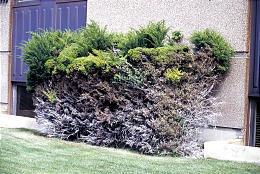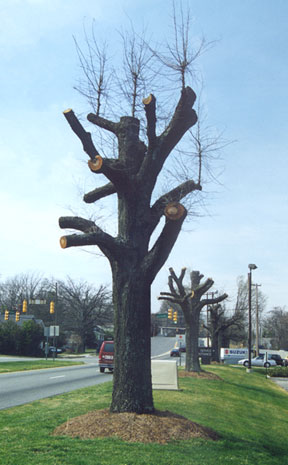Pruning is sometimes necessary to improve plant health. The only time pruning might not be needed is when a natural woodland area is desired.
In this case, dead branches and dead trees can be left to provide perches, nesting sites, and other desirable benefits for pollinators and birds.They become part of the natural nutrient cycling process in the landscape. Note, however, to occasionally check for any disease or pest outbreaks in these areas.
If a more manicured look is desired, then pruning should be performed to increase air circulation and sun into interior of trees and shrubs. Make sure to make clean cuts. Ragged and incorrectly cut branches can be entry sites for disease organisms.

Tips for Maintaining Plant Health
-
- Remove dead, dying, diseased branches
- Remove crossing or rubbing branches
- Keep pruning tools sharp to avoid ragged cuts
- Disinfect pruning tools to eliminate disease transfer
- Do not use disinfectant on tree or shrub wounds
NEVER “top” a Tree
- Promotes weak suckering branches
- Creates places for disease and insects to enter
- Destroys the natural tree form
- Looks ugly!

Additional Resources:
Midwest
Minnesota – Pruning Trees and Shrubs
Southeast
